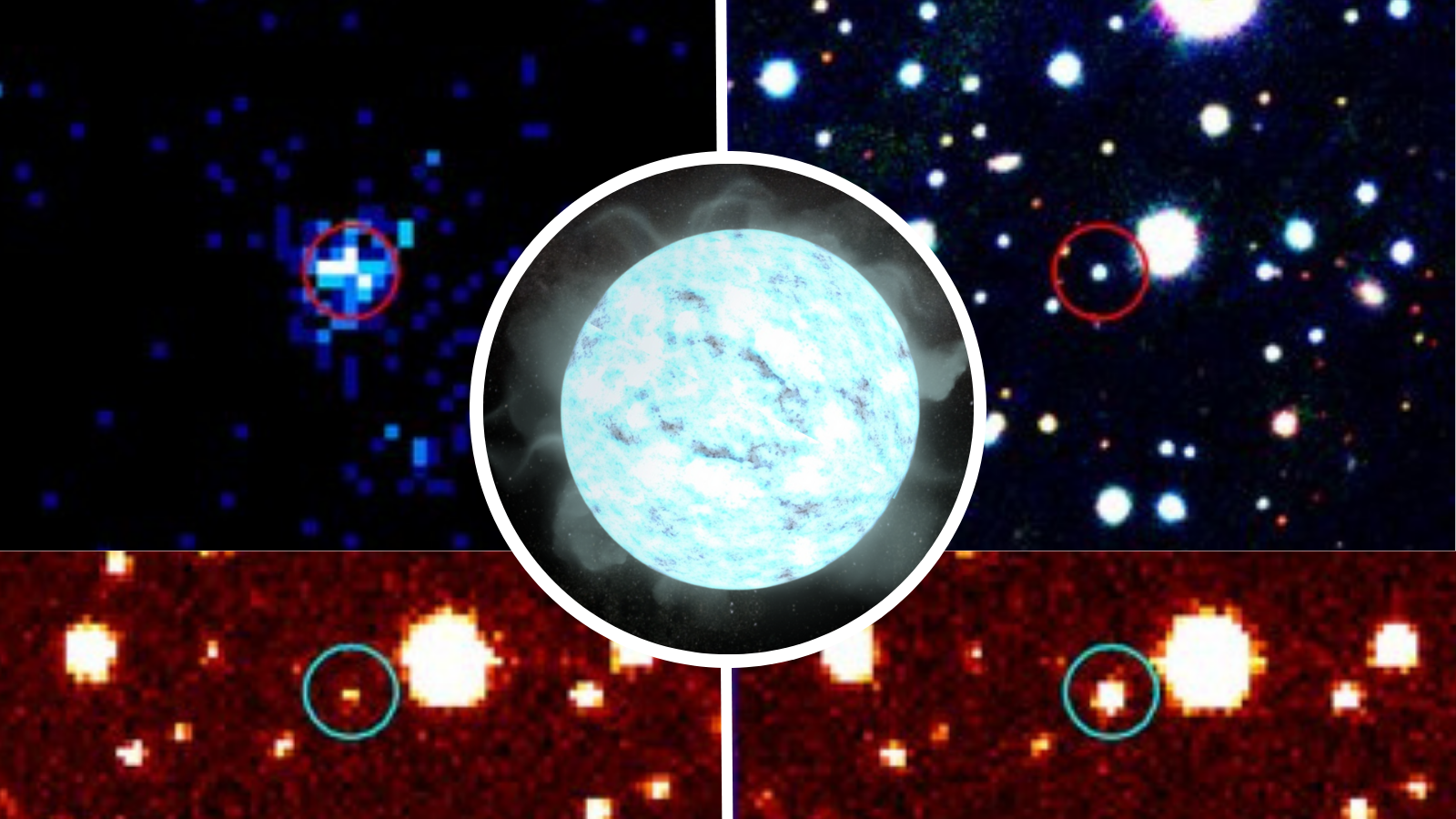Astronomers Uncover the 'Teenage Vampire' White Dwarf: A Missing Link in Stellar Evolution

Inset: an illustration of a white dwarf. Main top: Gaia22ayj seen in X-rays and visible light. Main bottom: images of Gaia22ayj taken by the Zwicky Transient Facility.
Astronomers have made a groundbreaking discovery that could reshape our understanding of stellar evolution—the identification of a 'missing link' that bridges the demise of sunlike stars and the emergence of white dwarf remnants. This cosmic rarity, referred to as Gaia22ayj and located approximately 8,150 light-years away from Earth, has been playfully dubbed a 'teenage vampire' white dwarf.
But unlike the traditional vampires of folklore that seek the blood of living beings, this white dwarf is engaging in a completely different kind of feeding frenzy. Gaia22ayj is voraciously consuming stellar plasma from a companion star, drawing in matter from its neighbor in a fascinating process that has significant implications for our understanding of stellar life cycles.
The discovery was made by a dedicated team of astronomers who utilized the Zwicky Transient Facility (ZTF) based at the Palomar Observatory in California. The researchers meticulously scanned the Northern Hemisphere's night sky, searching for transient astronomical events—objects exhibiting rapid changes in brightness and behavior.
Initially, Gaia22ayj garnered attention due to its unusual and rapidly pulsating signal, leading scientists to classify it as a detached double white dwarf binary, where two white dwarf stars orbit each other. However, subsequent observations revealed anomalies that did not align with this early classification. Astronomers noted that Gaia22ayj is one of the most extreme pulsating objects recorded to date, with brightness surging by an astounding 700% in merely two minutes.
The true nature of Gaia22ayj became clear: it is a white dwarf actively consuming material from a companion star. This binary system is in a fleeting and rare phase of its existence, akin to a star living on borrowed time.
Images captured by ZTF illustrate Gaia22ayj's remarkable behavior. In the accompanying images, the object appears significantly brighter in the rightmost photo, taken just two minutes after the left one, showcasing its pulsating nature. (Image credit: ZTF/Caltech Optical Observatories/A. Rodriguez)
To understand the context of this discovery, it is essential to grasp the lifecycle of stars. Stars undergo various endings based on their mass. Those exceeding eight solar masses typically perish in explosive supernovae, resulting in either neutron stars or black holes. In contrast, stars like our sun, which has a mass closer to that of one solar mass, do not experience such cataclysmic endings. Instead, they evolve into white dwarfs after exhausting their nuclear fuel.
In approximately six billion years, our own sun will undergo a similar transformation, shedding the majority of its mass during a red giant phase before ultimately dwindling into a smoldering white dwarf. Interestingly, nearly half of all stars comparable in mass to the sun have binary companions. This dynamic can lead to a second life for white dwarfs, allowing them to draw in stellar material from their companion stars, a phenomenon that aptly describes the interaction between Gaia22ayj and its neighboring star.
Initially, Gaia22ayj puzzled astronomers due to its light curve—the way its brightness changes over time—which did not conform to expectations for a detached double white dwarf binary. Tony Rodriguez, a graduate student with the California Institute of Technology's ZTF Stellar Group, began to investigate why the light curve exhibited such irregularities. Analyzing additional data, he and his colleagues hypothesized that Gaia22ayj is actually a white dwarf orbiting a 'normal' low-mass star, as opposed to another white dwarf. They also discovered that Gaia22ayj possesses a strong magnetic field and spins at a rapid pace.
This unique combination of traits is reminiscent of a white dwarf pulsar, a type of dead star that emits electromagnetic radiation as it spins, akin to a cosmic lighthouse. However, the feeding mechanism observed in Gaia22ayj sets it apart from typical white dwarf pulsars, marking it as a fascinating case study.
The researchers eventually came to a significant conclusion: Gaia22ayj represents a crucial missing link in our understanding of white dwarf pulsars. It showcases a transitional phase during which a white dwarf has developed a strong magnetic field and is on the brink of initiating the process of siphoning matter from its companion star.
Rodriguez emphasized the importance of this finding, stating, 'We have already seen two infant systems—white dwarf stars in a binary system whose rapid spin builds up a strong magnetic field. And we had seen lots of adult star systems where the white dwarf star was spinning very slowly.' He continued, 'But this was the first star we've seen that is right in the middle of its 'teenage' phase, when it has already established a strong magnetic field and is just beginning to funnel matter from the companion star onto itself.' This unique observation reveals the complexities of stellar evolution and the transient nature of these systems.
The significance of this discovery is amplified by the brevity of the 'teenage phase' of such stars, lasting only about 40 million years. While this may seem like an extensive period within a human context, it is relatively short on a cosmic timescale, particularly when considering that stars like our sun typically exist for around 10 billion years before transitioning into white dwarfs. To put it into perspective, if Gaia22ayj's lifespan were analogous to that of an average human, its teenage phase would last a mere 107 days—a blink of an eye in the grand scheme of stellar evolution.
Rodriguez remarked on the additional data sourced from the W. M. Keck Observatory, which provided compelling evidence that this system possesses a robust magnetic field and is actively funneling matter onto the white dwarf. Furthermore, unique data from the Palomar Observatory highlighted that Gaia22ayj is indeed slowing down, adding yet another layer of intrigue to this already fascinating celestial phenomenon.
The research findings regarding this extraordinary stellar system were published in February in the Publications of the Astronomical Society of the Pacific, contributing to the growing body of knowledge surrounding the lifecycle of stars and their remnants.



















